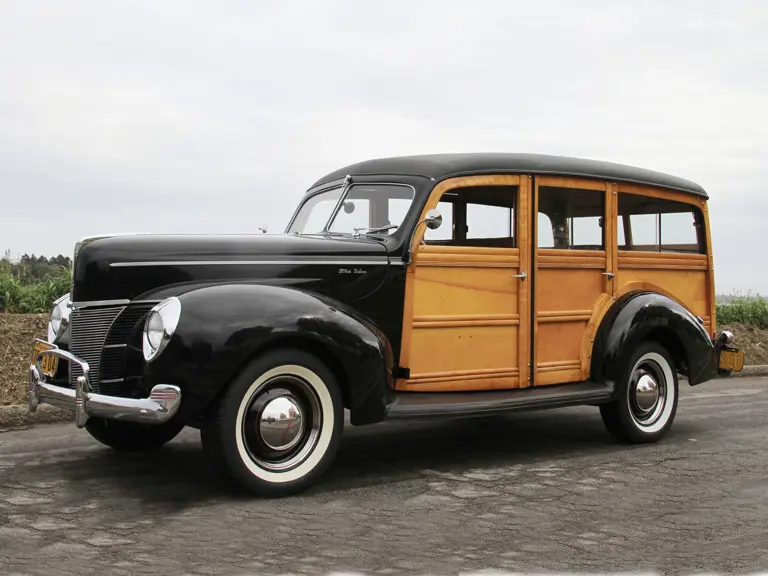Through 1939, Ford’s station wagon bodies were assembled by Murray Corporation of America, from wood grown in Henry Ford’s northern Michigan forests. That year, however, relations between Ford Motor Company and Murray soured. This led Ford to consider in-house production of the station wagons. Discussions with the management of the Iron Mountain operation, then providing the wood parts to Murray for assembly, resulted in a proposal for all body assembly to be done in the northern Michigan locale and that bodies be sent to assembly plants fully finished and trimmed. The change took place at the beginning of the 1940 model year.
The bodies took on a much different appearance. The roofline was subtly altered, becoming more rounded at the windshield header. Panel spacing was changed, such that the lower panel became narrower, and the rear quarter panels were consolidated into one piece. The rear doors, formerly hinged at the back, “suicide” style, now swung toward the front. The spare tire, housed inside in 1938 and ’39, on the back of the driver’s seat, was returned to the tailgate, where it had been located from 1935 to 1937. Deluxe wagons were given the option of maple or birch framing, while Standards came in maple only. Darker-colored gumwood began to be used for panels, in addition to birch, in both series. The choice of material was random. Bodies were given three coats of varnish, hand-sanded between each application.
Deluxe woodies also got an adjustable front seat, the same assembly used in the convertible. Seats for the Deluxe had the cushions faced in genuine brown Spanish grain leather. Dearborn management was pleased. Quality increased over that of the bodies built by Murray, at a lower unit cost.
This very original California example is was purchased from Wavecrest’s Dave Doherty in 2001. It is reported that the wood and paint are all original to this fine vehicle that has the rare third seat. It has been converted to a 12-volt system and is driven by its correct Flathead V-8 engine with manual transmission and two-speed Columbia rear end. The Deluxe also has chrome headlight trim rings, Deluxe badging, glovebox door clock, bumper guards, Deluxe hubcaps, whitewall tires, rear-mounted covered spare and dual mirrors. This iconic “woodie” 1940 Ford Deluxe Station Wagon will make a stylish and enjoyable addition to any collection and is a must-have for any collector of early Ford V-8s.



 | Fort Lauderdale, Florida
| Fort Lauderdale, Florida


